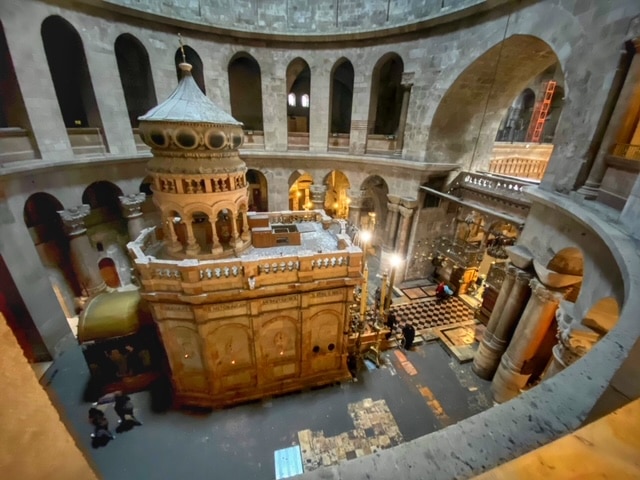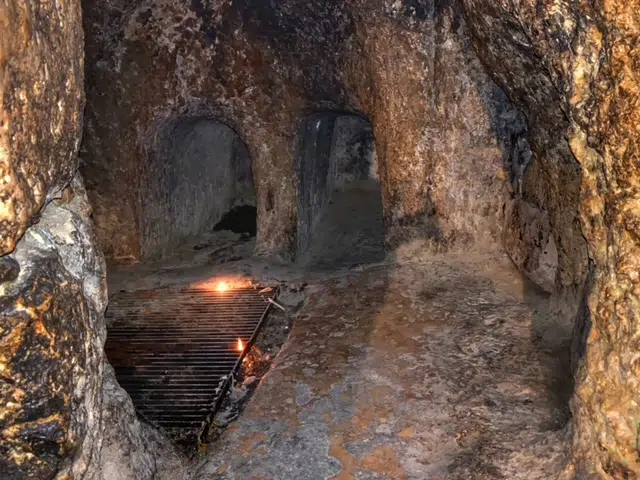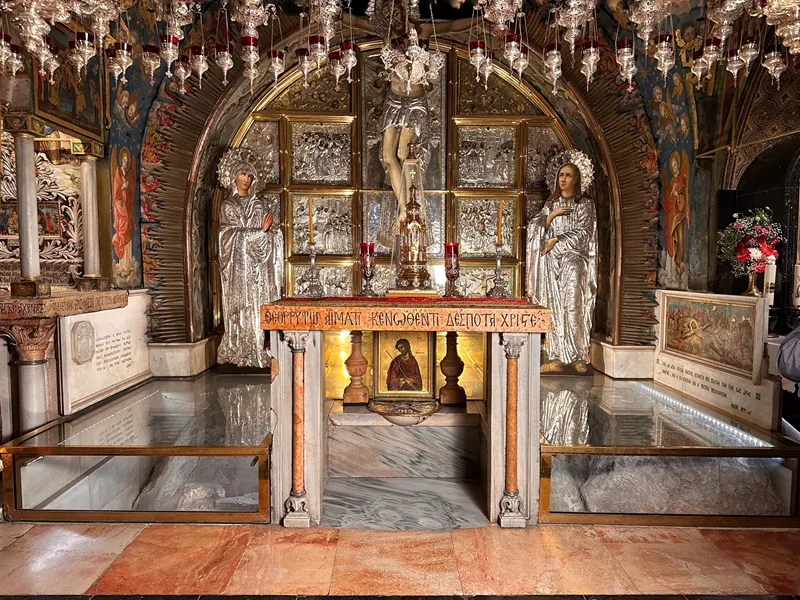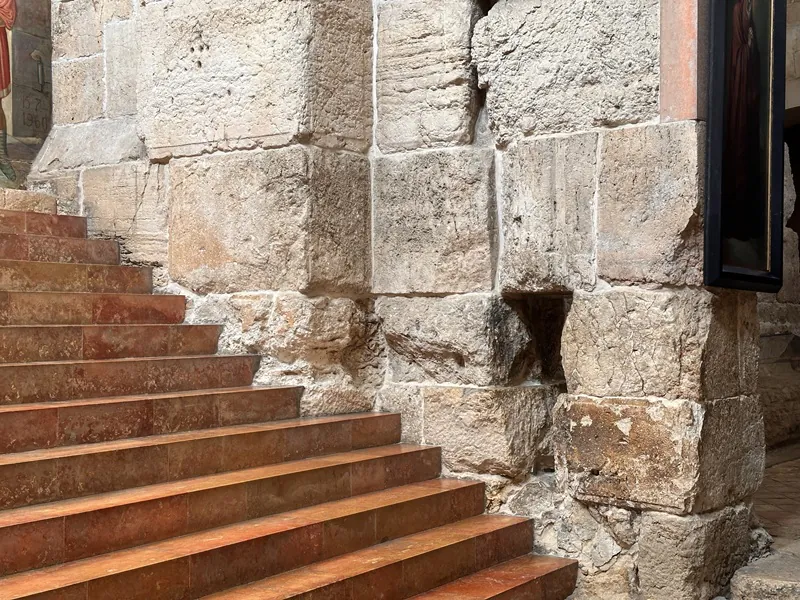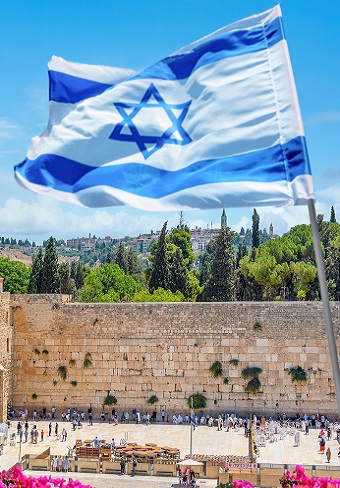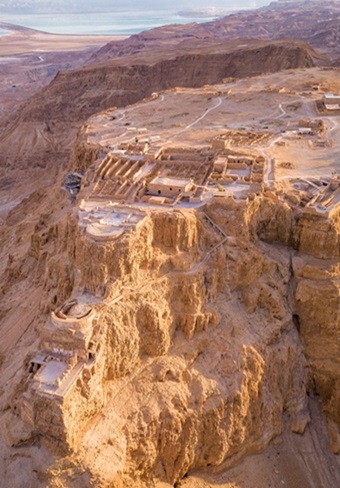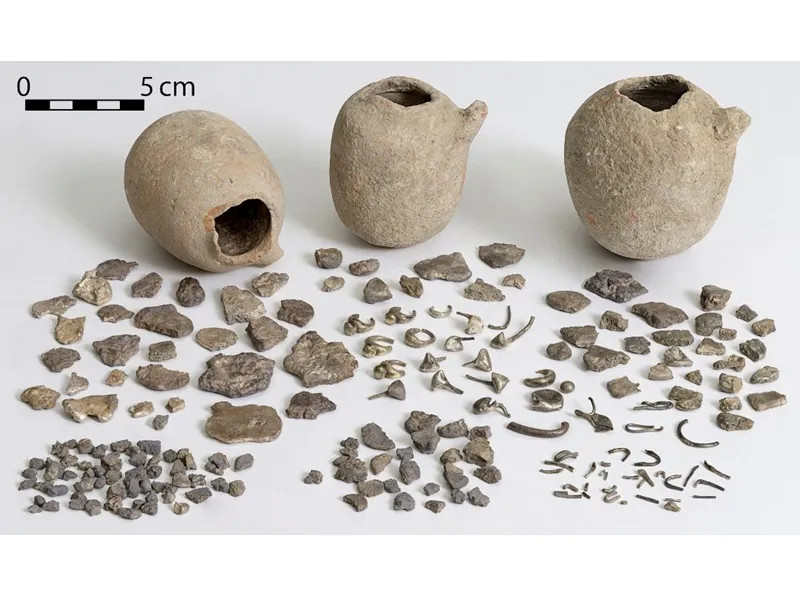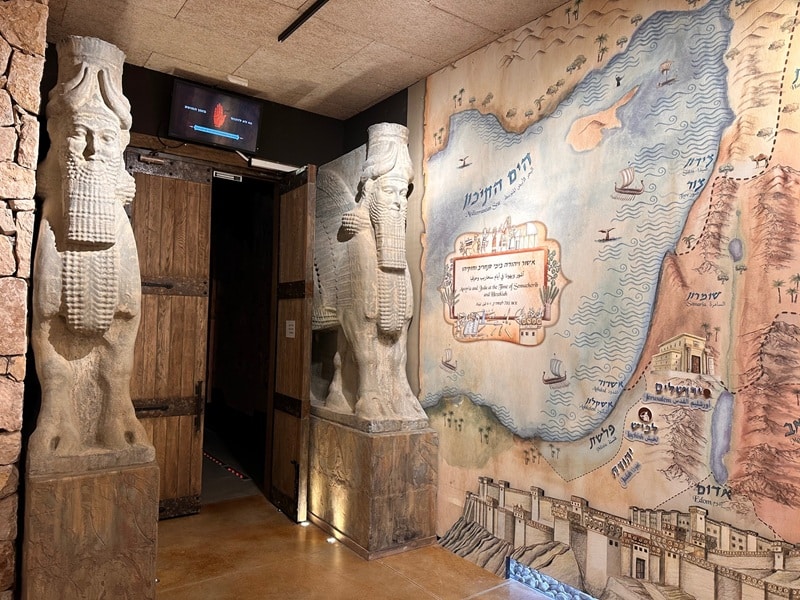Gardening Soil Found in the Holy Sepulchre: Proof of Jesus’ Burial Site?
The Church of the Holy Sepulchre in Jerusalem’s Old City is possibly the holiest site in Christendom. Since the 4th century AD it is venerated for as the site of the Golgotha, where Jesus was crucified, and the tomb where he was buried, and resurrected. Built by Emperor Constantine, the church has endured multiple destructions and reconstructions. The church draws millions of pilgrims annually who come to pray at its many chapels, culminating in entering the empty tomb.
New Restoration Project
Temporary wooden floor set around the Holy Sepulchre during the 2022-2024 restoration project.Due to its centuries-old construction and numerous modifications since necessary conservations were in need. In 2016 the 200-year-old Edicule built over the tomb of Jesus was restored. Steel scaffolding added in 1946 was removed, and both the interior and exterior were cleaned and restored.

Temporary wooden floor set around the Holy Sepulchre during the 2022-2024 restoration project.
In 2022 an extensive restoration project of the Church’s floor began, encompassing roughly 2,000 square meters of floor space. The team is carefully lifting the stone pavers to examine the archaeological layers beneath before restoring the floor. To maintain access for pilgrims, the expedition was working methodically, section by section. The project is being carried out by La Sapienza University of Rome, with oversight from the three main Christian denominations that share custody of the church. The Franciscan Custody of the Holy Land is providing additional support for the restoration efforts.
The technical aspects of the restoration are quite sophisticated, incorporating advanced technologies for documentation and preservation. The team is also installing new systems to control humidity and improve drainage, implementing measures that should prevent future water damage to this sacred site.
Unearthing Brown Soil and its Implication

Excavations next to the Stone of Unction. Notice the large amount of brown soil in a white bulk bag.
As the archaeologists have worked beneath the current floor, they’ve uncovered multiple historical layers revealing evidence of earlier church constructions, including remains from both the Constantinian and Crusader periods. But in my opinion, far more intriguing is the fact that at several places the dig uncovered brown soil commonly used also for gardening. Here are some photos of such deposits that I noticed during my visit in early 2024.
The presence and significance of gardening soil in the Church of the Holy Sepulchre has potential theological and historical implications. It could relate to the biblical accounts of Jesus’s burial site being in a garden. According to the Gospel of John (19:41), “At the place where Jesus was crucified, there was a garden, and in the garden a new tomb, in which no one had ever been laid.”

A close up of the brown gardening soil uncovered under the Holy Sepulchre.
Is this soil additional proof that the crucifixion of Jesus was indeed at the site of the Church of the Holy Sepulchre? I am eagerly waiting to read the archaeological report of this excavation. I wish to know if they suggest the same, or at least if they managed to date the brown soil deposits. If these deposits date to the first century, or earlier, it is, in my opinion, an important further testimony that the crucifixion and burial of Jesus indeed happened there.
